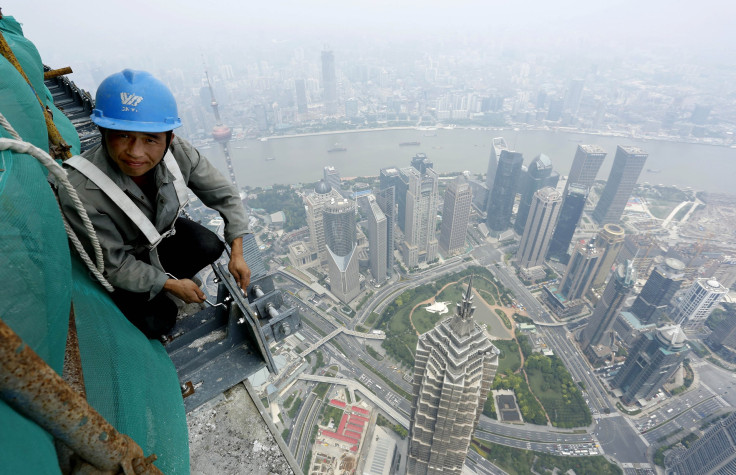Despite Slowed Growth, China Still Built Far More Skyscrapers Than Any Other Country In 2014

Despite the slowing growth in China that led to the country’s “New Normal” mantra at the World Economic Forum in Switzerland this week, the Chinese completed more skyscrapers than any other nation last year. China built 58 skyscrapers more than 200 meters (656.17 feet) tall in 2014, far more than any other nation, according to a recent report by the Council on Tall Buildings and Urban Habitat. The Philippines was second, with just five such structures.
In 2015, China’s lead in the skyscraper count should be even more pronounced, with as many as 106 such buildings nearing completion. The Shanghai Tower will likely be finished in the first half of the year, when it will become China’s tallest building and the world’s second-tallest, behind the Burj Khalifa in Dubai in the United Arab Emirates. Since these projects can take more than a decade to plan and finish, the pace of skyscraper construction does not necessarily reflect economic contraction or expansion in any given year.
In fact, government data released this week showed that the Chinese economy expanded by 7.4 percent in 2014, a slightly slower pace than officials had projected. Some of China’s sparkling skyscrapers -- Shanghai Tower, for example -- are heavily subsidized or fully funded by its federal government. Others are the pet projects of municipal officials who build them to capture attention for their cities or to make space for new residents.
“There is no doubt that many of the city governments in China are looking to upgrade their infrastructure and attract investments in global grade-A quality buildings so that they can help fulfill their strategies for economic development,” John Fitzgerald, chief executive of the Asia-Pacific region of the Urban Land Institute, a nonprofit organization focused on land use and real-estate development, told International Business Times.
For instance, the city of Tianjin rests just outside Beijing: It completed six skyscrapers in 2014 as part of the government’s effort to build a financial district to rival that of New York. Urbanism is another huge driver of these megaprojects, said Daniel Safarik, a co-author of the report by Council on Tall Buildings and Urban Habitat. China’s stated plan is to move 250 million residents from rural areas into cities in a dozen years, as reported by the New York Times.
Private companies are also spurring the trend, although to a lesser degree. Ping An Insurance Group Co. of China Ltd. is building the Ping An Finance Center in Shenzhen. It is scheduled for completion in 2016, when it will end the short-lived reign of Shanghai Tower as China’s tallest building.
All this development comes at the risk of creating space that sits empty because tenants fail to materialize as fast as projects are completed, as noted by the Wall Street Journal. Safarik pointed out these economic leaps of faith are much more common in China. But Fitzgerald indicated he believes that -- despite reports of empty skyscrapers like this one by Bloomberg News -- it’s not a danger the government isn’t able to keep in check. He said the government watches the supply closely and is careful to implement cooling measures such as restricted financing if and when oversupply becomes a concern.
“When development is happening at this pace -- there are definitely situations of oversupply, especially in the short term,” Fitzgerald said. “But there’s a general view that the pace and scale of urbanization is going to demand additional occupancy in residential, commercial and retail.”
Recognizing China’s zeal for skyscrapers, internationally renowned architectural firms that specialize in tall buildings have flocked to the country for the chance to work on these projects. They include Skidmore, Owings & Merrill LLP, Kohn Pedersen Fox Associates, Gensler and Aecom. “Anybody who’s in the business in a big way,” Safarik said, “is going to have at least one office in China.”
© Copyright IBTimes 2024. All rights reserved.












